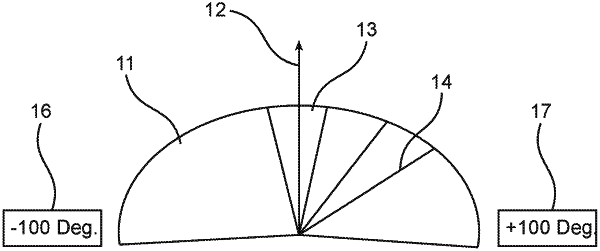| CPC A61B 3/12 (2013.01) [A61B 3/0041 (2013.01); A61B 3/032 (2013.01); A61B 3/113 (2013.01)] | 14 Claims |

|
1. A system for improving a patient's vision by training the patient to use a preferred retinal location (PRL), comprising:
a. means for diagnosing and monitoring a deterioration in macular vision or macular vision loss in a patient's eye, comprising means for testing and mapping a retina by scanning the retina, and
b. means for augmenting the use of a PRL in case the deterioration in macular vision or macular vision loss was detected;
further including means for applying a localized stimulus to one location on the retina at a time;
wherein the system further includes:
means for storing a PRL of an eye of the patient;
a processor;
a display for displaying an image to the patient; and
an eye tracker to determine the gazing direction of the patient;
wherein the processor is configured to present on the display only limited visual information corresponding to the PRL to the patient while preventing exposure of visual information from the rest of the retina to augment the use of a PRL by obscuring, fully or partially, the whole image on display except for the area associated with said PRL with reference to the gazing direction determined by said eye tracker, wherein said obscuring comprises either:
moving the image on the display according to the gazing direction to force the patient to see only part of the image to keep the stimulus on the PRL; or
moving an obscuring mask on the display to present to the PRL different parts of the image while obscuring the rest.
|